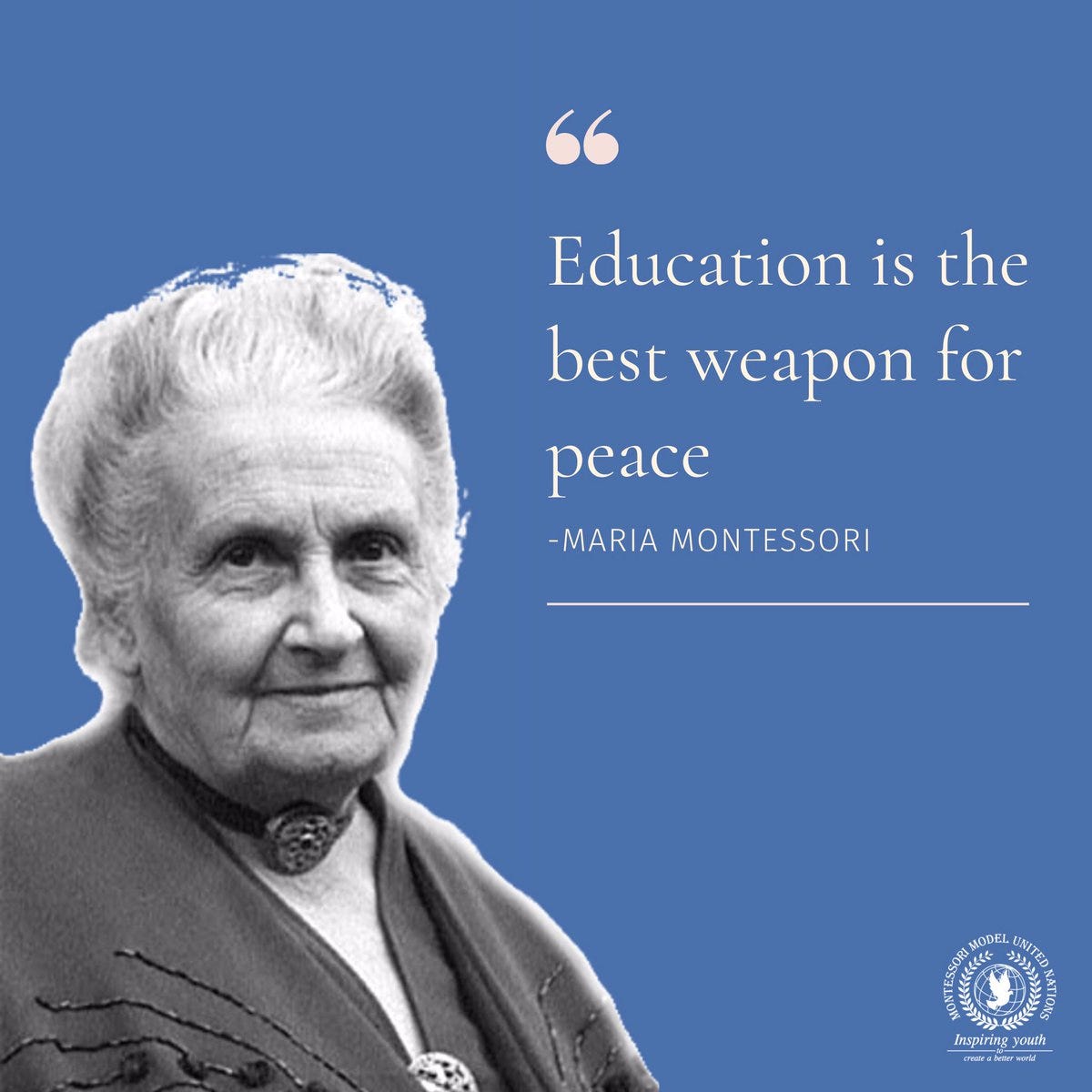"Peaceful"
Full of peace or full of shit?
A quick story about finding my calling.
I moved to a new city and was working four part-time jobs and still couldn’t pay my bills. Working as a substitute teacher in a Montessori school, I found myself bored during lunch in an elementary classroom. Flipping through a binder on the teacher’s desk, I stumbled upon the Montessori Model United Nations program. It was a lightbulb moment. As naive as it sounds, I felt I’d discovered how I could contribute to world peace. It was then I began to finally consider what my mom and grandmother had been telling me for years—I should be a Montessori educator.
The school eventually hired me as a full-time teacher (and facilitator of the Montessori Model UN program 🙌🏼) and I spent that first school year immersing myself in the world of Montessori—reading everything I could get my hands on. I read Montessori’s biographies. I read the AMI Journals and AMS Montessori Life publications. I went to local conferences. I was hooked.
What appealed to me most was how Montessori’s mission aligned with the social justice warriors I’d grown up idolizing. “Establishing a lasting peace is the work of education” felt like a calling. But as I continued my journey as a Montessori educator, I began to see how the word “peaceful”—the very word that drew me to this work—was often used in ways that strayed from Dr. Montessori’s vision of social justice.
Rather than an invitation to disrupt oppressive systems and build a more equitable world, “peaceful” was often wielded as a weapon in ways far removed from the inspiring call to action that Dr. Montessori wrote about.
Participating in a panel discussion about Montessori terminology at the recent AMS Conference in Denver was a chance to reflect on specific terms we think need to be reconsidered—whether to use them at all or how they are applied in practice. I wrote more broadly about the need to update our language here, but didn’t find space to cite a wonderful summary of that need from The Bloomsbury Handbook of Montessori Education:
“Montessori may also have contributed to her own isolation by being proprietary with her ideas and by frequently falling out with some of her most devoted students, and by developing educational terminology that could be inaccessible to others.
In the face of external criticism, Montessori educators have historically developed a fiercely protective and affirming culture around Montessori education, as well as a rich literature for fellow educators documenting Montessori’s life, pedagogy, and the dissemination of her work. To outsiders, this culture can appear both worshipful and uncritical. In academia, by contrast, criticism and addressing limitations are considered hallmarks of objective research. Developing a robust field of Montessori research requires balancing these competing impulses to document, affirm, and critique.”
“Document, affirm, critique.” In some ways, this is the goal of my Substack.
Allow me to do so now with the word peaceful.
DOCUMENT
The social justice origin story of Montessori, although more complicated than many in our community know (see Mira Debs’ book Diverse Families Desirable Schools), is a call to action and a motivating mission for so many Montessori educators. Dr. Montessori was far more interested in restructuring society toward liberation and justice than simply transferring academic information.
AFFIRM
Montessori is the only educational methodology I know of with the explicit, grand goal of peace education. In a society sick with white supremacy, suffering from the ails of poverty, and diagnosed with an impending climate disaster, it’s never been more important to prioritize an education aimed at universal liberation. And in the face of such dire circumstances, it is the child that is the hope for the future.
“Either education contributes to a movement of universal liberation by showing the way to defend and raise humanity or it becomes like one of those organs which have shriveled up by not being used during the evolution of the organism.” -Maria Montessori
CRITIQUE
As wonderful as the idea of peace is in theory, in practice in Montessori spaces, it is often directed toward a single child: they are either peaceful, or they are not. And in these contexts, peaceful usually means quiet, calm, accommodating, and acquiescent. And it’s usually a girl…a white girl.
But peace requires much more than this type of person.
What social movement has been successful without disrupters—people who are vocal, unwavering, questioning authority, rowdy? These are the traits that have led to significant social change. What if we began referring to these characteristics as peaceful?
I think of John Lewis’ famous line, “Make good trouble, necessary trouble.” Activists who marched and staged sit-ins would not be deemed “peaceful” in most Montessori classrooms—but these “troublemakers” were the ones doing the hard work of building a more just and peaceful society.
If we truly want a more peaceful world, and we believe that work starts in our classrooms and Montessori communities, then we have to ensure that when we use the word peaceful, we broaden the definition of what that means.
If we only use peaceful to describe quiet, calm, compliant students, we risk not just excluding children, but excluding the very behaviors that will create lasting peace.
“How can we speak of Democracy or Freedom when from the very beginning of life we mold the child to undergo tyranny, to obey a dictator? How can we expect democracy when we have reared slaves? Real freedom begins at the beginning of life, not at the adult stage. These people…whose wills have been broken by elders who say: 'your will must disappear and mine prevail!'—how can we expect them, when school-life is finished, to accept and use the rights of freedom?” -Maria Montessori



